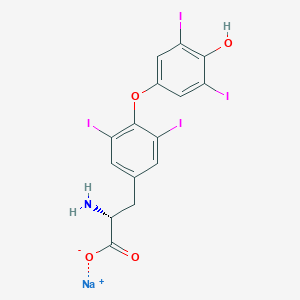Chinese scientists research reveals mammalian high temperature protection mechanism
-
Last Update: 2021-03-15
-
Source: Internet
-
Author: User
Search more information of high quality chemicals, good prices and reliable suppliers, visit
www.echemi.com
RPV1 the molecular mechanism of thermal infuscing and its biological significance for high temperature tolerance to mammals (available from Kunming Zoological Research Institute, Chinese Academy of Sciences)
On May 14, Lai Wei, a researcher at the Kunming Institute of Zoology of the Chinese Academy of Sciences, and Yang Shilong, a team from Zhejiang University, teamed up with Yang Fan, a professor at Zhejiang University, and Yang Fan, California. In a paper published in Nature-Communication, Professor Zheng Wei of the University of Davis reveals the thermal indation molecular mechanism of the TRPV1 channel and its important biological significance in mammalian evolution, and shows that TRPV1 thermal indation is a very important high temperature protection mechanism for higher mammals.
TRPV1 is an important temperature perception element in mammals and can be activated by high temperatures above 40 degrees C, but TRPV1 high temperature activation will quickly occur high temperature-mediated inactivation. TRPV1 thermal activation and thermal inactivation are closely coupled, so it is difficult to effectively study the molecular mechanism of TRPV1 thermal inactivation, and thus the function of TRPV1 in mammalian life activities is not known.
researchers say the key to uncovering the molecular mechanisms of thermal inactivation of TRPV1 in mammals is to obtain a TRPV1 that only occurs with thermal activation and not with thermal inactivation, in order to use this as a template for research on molecular and animal levels.
based on species evolutionary analysis and functional studies, the researchers obtained TRPV1, a platypus that only has thermal activation and no thermal inactivation. Using techniques such as channel chimline construction, non-natural amino acid markers, fluorescent resonance energy transfer, and metastasis configuration simulation, they found that thermal infraction of TRPV1 depends on the interaction of the N-end and C-ends within the cell, which in turn drives the perforation and closure. The TRPV1 of the platypus does not have the characteristics of thermal indation, so it does not have this variant process.
to explore the biological significance of TRPV1 thermal inergicity, the researchers constructed a platypus
(p-
) genetically modified knock-in mice. It was found that wild mice were more resistant to long-range heat stimulation than p-
mice, and p-
mice avoided heat plate stimulation by walking continuously. Not only that, but long-range hot plate stimulation can burn the p-
's foot, but it has no significant effect on wild mice.
, it can be seen that TRPV1 thermal indescing is a protective mechanism for higher mammals to cope with high temperature environment. As one of the most primitive mammals, the platypus TRPV1 has not yet evolved the "activation-inactivation" equilibrium mechanism mediated by high temperature. Therefore, the platypus is extremely sensitive to the environment above 25 degrees C, and it is difficult to adapt to the higher land environment in its distribution area. (Source: Science Network Xinyu)
related paper information:
This article is an English version of an article which is originally in the Chinese language on echemi.com and is provided for information purposes only.
This website makes no representation or warranty of any kind, either expressed or implied, as to the accuracy, completeness ownership or reliability of
the article or any translations thereof. If you have any concerns or complaints relating to the article, please send an email, providing a detailed
description of the concern or complaint, to
service@echemi.com. A staff member will contact you within 5 working days. Once verified, infringing content
will be removed immediately.







